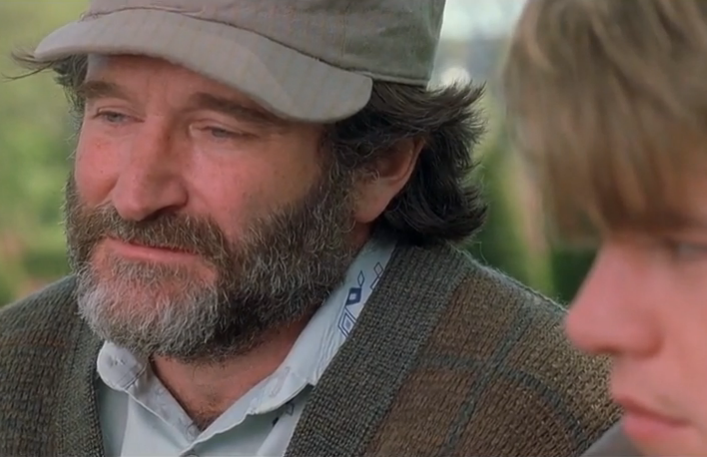
When I was 27, I certainly never expected that one day my father would hang himself in the garage.
Twenty-seven years later, my father has now been dead for as long as I lived with him. The harsh, immediate impact of that cold January day is now distant and faded.
Today, my life is so enriched by my father’s presence that I’m more inspired by his death than hurt by it. I’m inspired by the influences that shaped his life. The people, his work, life events, and personal beliefs that made him a great man—and yes, ultimately, the man who killed himself.
When people kill themselves, we often kill them off as well, permanently. Rarely do we look back at what shaped who they were, other than to dissect why they killed themselves.
Now I focus on what makes those who chose to leave us great. I think about how we might have helped them, those to come, and those we come across every day.
Every year, nearly 800,000 people commit suicide worldwide.
It’s the third leading cause of death in 15-44 year olds, according to the World Health Organization (WHO). It’s a mind-blowing number—every year, this many people find a reason why this life no longer serves them enough to stay.
Two other great men who committed suicide and continue to inspire me are famed writer, Ernest Hemingway and renowned actor/comedian, Robin Williams.
Hemingway has captivated me with the gifts he left to the world. Not only his famous works—like A Farewell to Arms, For Whom the Bell Tolls, or The Old Man and the Sea—but the way he lived his life.
He was first a reporter for the Kansas City Star and Toronto Star where he adopted an inimitable writing style that’s direct and succinct, yet fluid and positive. He wrote hundreds of articles to keep his readers informed, including those as both a foreign and war correspondent. He was dedicated to the fight for liberty and freedom.
Hemingway was heavily involved in four wars, including World Wars I and II (WWI and WWII). He was rejected from serving in WWI upon failing his medical exam; he then took a job as an ambulance driver for Italy. On one of his first encounters, he was involved in picking up body parts after an ammunition factory explosion which greatly rattled him. In 1918, he was seriously injured at the front line with mortar fragments shredding both legs and was later sent home due to a more serious injury. It was said he may have saved another soldier’s life, carrying him on his back.
After the war, his purpose was defined by his writing career which consumed the bulk of his life. Hemingway left this life with seven novels, six collections of short stories, and two works of non-fiction published. He won the both the Nobel and Pulitzer Prize.
He was also plagued throughout his life by physical injury, a plethora of health problems, two plane crashes, and severe depression. All of which were only exacerbated by his excessive drinking (which is still idealized today by social media). He’d been committed to an insane asylum after multiple suicide attempts, but would eventually be released. His own father had committed suicide with a civil war pistol leaving an indelible impression and causing great pain for him.
He’d lived an amazingly rich life and was suffering from paranoia. No longer able to live a worthy and famed life and consistent with his quote, “It’s better a day as a lion, than a lifetime as a lamb,” Hemingway shot himself in 1961.
The reality is he was suffering for a very long time. I only wonder if we could have helped Hemingway in the earlier days. And, if so, what could have been done and would he have cooperated? Would counseling to manage the psychological impacts of war (rarely done in the day), alcohol rehab (certainly better today than back then), or even psychotherapy have helped? Could his final depression have been thwarted by an earlier diagnosis of his hemochromatosis (an inability to metabolize iron culminating in mental and physical deterioration)?
On the flip side of Hemingway, there’s Robin Williams. Williams was constantly bringing up delicate issues like AIDS before it was popular. He was highly instrumental in the first Comic Relief, and he entertained nearly 100,000 troops with the USO.
He was a comedian whose career took off while starring on the sitcom “Mork and Mindy,” but he also had an incredible ability to be a serious character actor and take on darker roles. Who could forget him in Good Will Hunting or Dead Poets Society? He’s made millions of us laugh and cry for years.
Williams was already drinking and taking drugs when he met John Belushi. But, it was from partying with Belushi and doing cocaine the night before Belushi’s death that “scared him sober.” He eventually would stay sober for two decades before relapsing in 2006 and 2014.
The year before Williams died was marked by severe anxiety, depression, insomnia, tremors, and a host of symptoms that would be misdiagnosed as Parkinson’s disease. It was discovered after his death that he suffered from one of the worst pathologies of Lewy body dementia, which according to his wife, drove him to suicide.
From both Hemingway and Williams, we see several commonalities. They both channeled their pain or struggles in a highly creative manner. Be it war, illness, children, or death, many significant life events significantly altered the way they thought. They both suffered from intense alcoholism and crippling depression.
We all know that depression is the main cause of suicide. But how do we know when depression is really something else? Or, when someone has another disease and gets depressed, how should it be dealt with? There are 121 million people suffering from depression worldwide and in the United States. Eighty percent of the people suffering from symptoms of clinical depression are not getting any treatment.
With my father, identification and treatment were critical to trying to save him. As a society, it’s something we have to change, and the good news is that it’s happening already. There’s a whole movement going on to help us get more comfortable with suicide and how to help. Just this past month, Def Jam artist, Logic, performed his single “1-800-273-8255” at the MTV Video Music Awards. The song is named after the Suicide Prevention Lifeline and shares a story of hope. Calls to the hotline increased by 50 percent that same week.
But, not all of us are rockstars.
More importantly, as individual mothers and fathers, friends, sisters, brothers, grandparents, and so on, suicide screams at us to become aware, to understand and look for people’s pain. It’s not easy to decipher that pain, but we begin by identifying it, and then by talking about it.
While I’ve found comfort and ease with my father’s death, I do wish we’d had more time to work with him when he was sick. To talk to him about it more. If I’d had the information I have now before it happened, I would have been enabled and empowered to treat the months before his suicide very differently.
Anyone today can personally become more aware and educated to directly help prevent a suicide. There are many tools at our disposal which anyone who is interested can look into:
1. Participate in National Suicide Prevention Week, starting Sept. 10th thru 16th, and follow the hashtag #stopsuicide.
2. Be the person to have a conversation with someone in crisis. Talking about suicide with someone lets them know someone cares and it can prevent suicidal ideation. Visit BeThe1To to learn five simple steps that teach the skills needed to have that conversation.
3. Volunteer at your local crisis center. They can train you and are relying on volunteers to provide support.
4. Join a local suicide prevention walk.
5. Donate to the American Foundation for Suicide Prevention or a national crisis center via Lifeline.
6. Record a Video Support Message and share it with your friends or network on social media.
It’s purely family and friends that can make a difference to so many. My hope is that it’s possible to change this in our lifetime. Together if we can make the number of suicide preventions become a greater statistic than the suicide death rate, we’ll make real progress. Particularly for our children and teens, for whom suicide is significantly on the rise, I know we just can’t wait anymore.
~
~
~
Author: Karen Schneider
Image: “Good Will Hunting,” Infographic/Healthline.com
Editor: Travis May
Copy Editor: Yoli Ramazzina
Social Editor: Catherine Monkman







Read 0 comments and reply